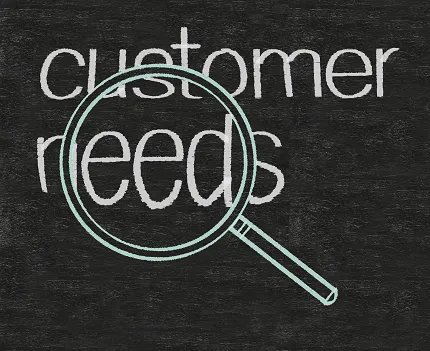Executive Sponsorship—Key to Effective Customer Experience Programs: Part One
A Look at What Works and Why
Wisdom gained from customer experience (CX) programs tells us that organizations have to earn the right to do business with each of their customers. No longer can it be assumed that today’s customers will be tomorrow’s customers. Competition is fierce—and customer service expectations are high.
Recognizing this, many organizations have established formal customer experience programs to create a systematic approach for gathering and analyzing customer insights, and then using that intelligence to inform business decisions and to take action. Here at Verint, with our Actionable Intelligence vision, we take this to heart.
While Verint has always been a customer-centric organization, we knew that a dedicated program would help us maintain that focus and take a proactive approach to rapidly changing requirements and expectations. We believed so strongly in the value of capturing, analyzing and taking action on customer insights that we custom-built a function around it, which is driving a cultural evolution toward developing customers for life.
We know that no one department owns and drives the CX. In essence every person in every department and every function plays a role. That said, we find that the most effective CX programs have executive sponsors, backed by key advocates from across the business.
As one of the executive sponsors of the Verint CX program, following are some insights I’d like to share into the findings, approaches and interesting discoveries we’ve made along the way—as well as some perspectives on the importance of executive support and involvement across the business.
Gaining Broad-Based Executive Support
CX executive sponsors must open doors and leverage strong relationships across the management team. We already have established relationships through regular meetings and collaboration with our company’s top executives; so, when we initiated the program, we quickly started socializing the customer experience program with them and their direct reports.
We were able to build the business case, establish the value that CX brings, and reinforce how the CX can be a significant competitive differentiator. With management helping to champion this mindset and business approach, we’ve been able to continue establishing throughout the business that the CX is everyone’s job.
We all make an impact, regardless of our function and whether or not our roles are customer-facing. For example, when we asked the leader of Finance to join the customer experience efforts, he wondered if it was a place he could make a meaningful contribution. He took a leap of faith and has been a valuable member of the CX Executive Council with program guidance and—as we establish program ROI—helping to correlate overall satisfaction with purchasing behavior.
Converting Skeptics
To be sure, not everyone understood the CX program, its charter and the impact it could have immediately. At first, some viewed customer centricity more tangibly than others. Our job as executive sponsors has been to show them this is real—and share how customer insights are driving positive changes and advancements, as well as spotlight results and where/how it’s making a difference.
By bringing the voice of the customer into executive, departmental and employee discussions and decision making, we’re taking advantage of vital feedback and applying it in meaningful ways.
Supporting CX Program Tools and Infrastructure
Initially, one of the biggest challenges to overcome was demonstrating that the CX program is not a project or a department. Instead, it’s a mindset and culture shift. We’re changing the mindset of the company to focus outside-in first—and that’s what we believe today’s great companies are doing.
A helpful resource for this transformation is a journey map. This shows employees where their departments fit into the overall customer experience journey. Customers see a company as one entity, and journey mapping helps departments and their staff see that everyone plays a role and adds tangible value. We’ve seen this change how employees approach their work, collaboration and engagement.
Mindset shifts don’t happen overnight, we know. What companies may run into at the onset of their CX programs are initial questions about whether the time and effort required pay off. Here’s what our executive sponsors have seen: Collecting, analyzing and sharing customer intelligence wins over employees and customers alike.
When you make findings and feedback available to executives, managers and employees overall—and when they understand how that input ties into their functions—it becomes real and tangible, and then the ownership paradigm starts to shift.
Finally, a governance structure is key. This helps people understand the processes of decision making, policy development and the implementation and monitoring of those decisions and policies. It spells out exactly what we are going to do as an organization to put the customer first.
In an upcoming part two of this blog series, I’ll offer some perspective on establishing an executive sponsorship function and some of the program’s benefits we’ve experienced.
The post Executive Sponsorship—Key to Effective Customer Experience Programs: Part One appeared first on Customer Experience Management Blog.